The Whales Who Never Forgot
New research has revealed that even when whaling left only a few hundred survivors, humpbacks remembered the Great Barrier Reef
Humpbacks on Australia’s east coast were almost wiped out. From tens of thousands, only a few hundred survived the harpoons. Yet even then, they never forgot the Great Barrier Reef. A new study shows that cultural memory carried them through near extinction, and their recovery is proof of what happens when we give whales the chance to remember.
In 1965, a pilot flying a fisheries survey over the Great Barrier Reef leaned out of his cockpit. Below him, the sea was flat and turquoise, broken only by a scatter of white plumes. At first, he thought it was a school of tuna. Then he saw them, dark backs rolling, tails lifting, calves rising beside mothers.
Humpbacks.
It was the kind of sight no one expected to see again. By then, the east coast population had been reduced to scraps. Soviet whaling fleets had killed more than 20,000 from 1959 to 1961 alone. Shore stations at Byron Bay and Tangalooma had closed, not because the work was done, but because there were no whales left to kill. From tens of thousands, perhaps only a few hundred remained.
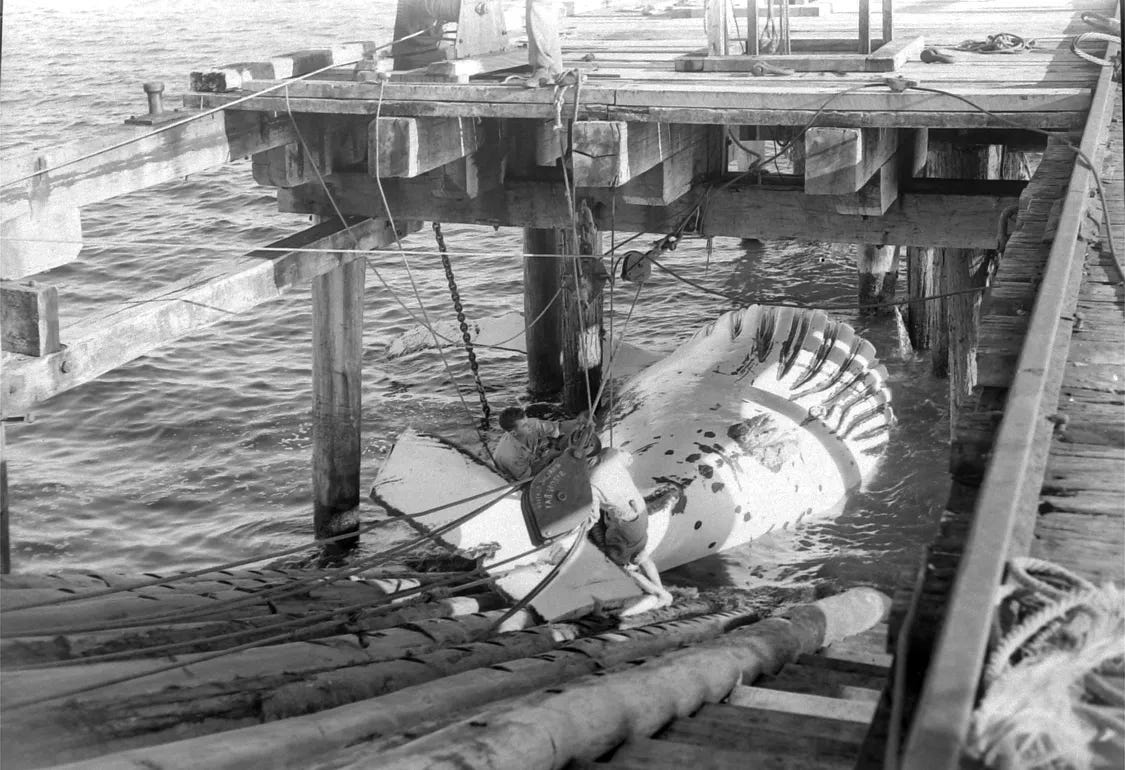
The pilot circled in disbelief. The ocean had been empty for years. Yet here they were, surfacing in the shallows of the reef.
A new study published this summer confirms that the sight was no anomaly. Even at their lowest numbers, humpbacks never abandoned the southern Great Barrier Reef. They carried cultural memory of this breeding ground across centuries. The researchers call it “multi-millennial memory.”
Memory Older Than Science
For the Woppaburra people of the Keppel Islands, a small group of islands off the central Queensland coast, at the southern end of the Great Barrier Reef, none of this is surprising. In their Dreaming (the Woppaburra’s ancestral law and creation stories), Mugga mugga, the humpback, is a creation spirit. One blowhole made the islands, reefs, and forests. The other made the people and their laws.
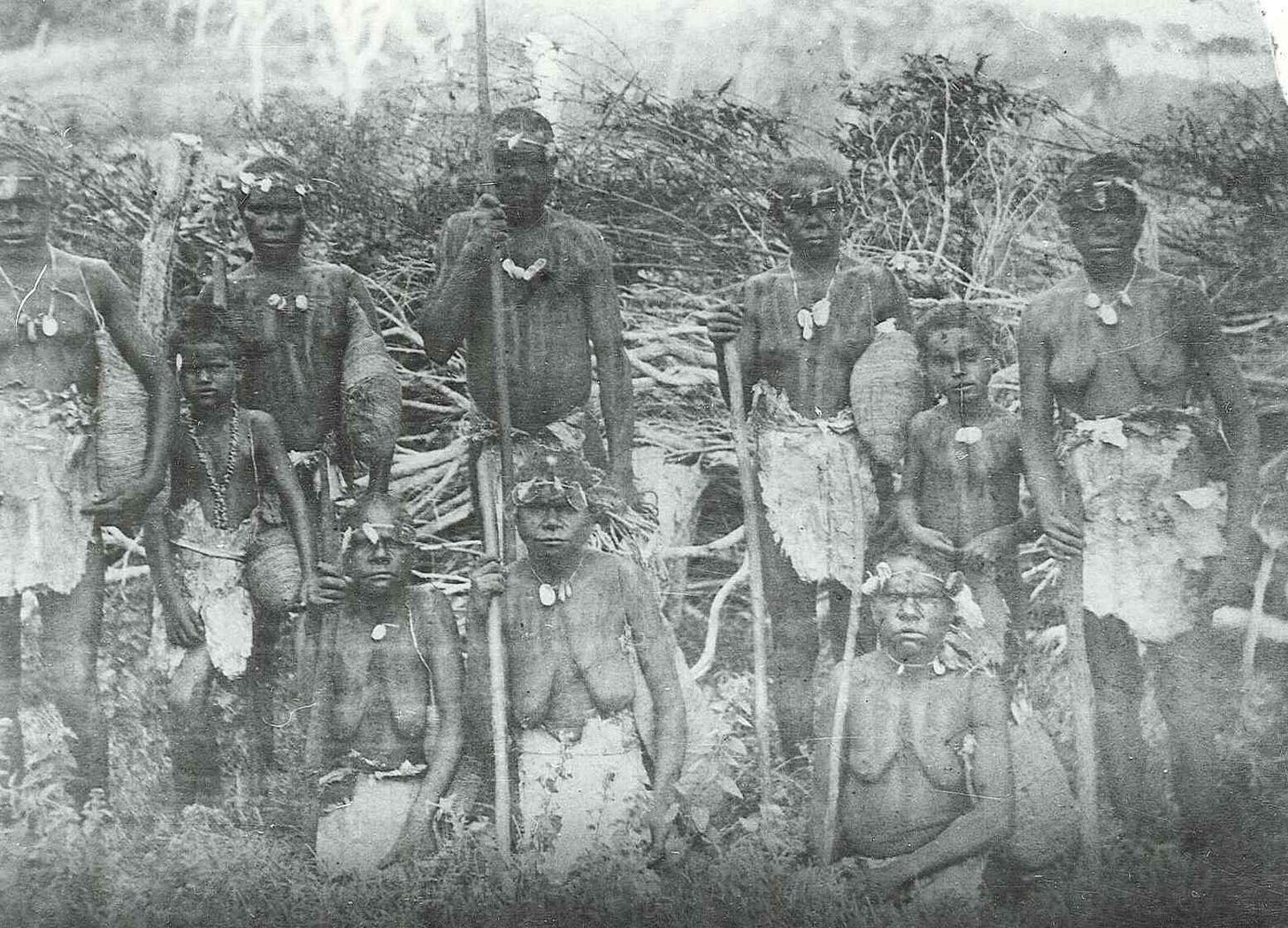
Every spring, as whales arrived from the south, their presence was woven into ceremony. Boys becoming men painted their bodies with stripes echoing a whale’s throat grooves. Ritual scars were cut with oyster shells to mirror the markings on a whale’s flank. Songs marked the return of abundance, timed with the winds that carried whales into their waters.
This is cultural memory. A way of keeping knowledge alive across generations.
Science has its own words for this.
Philopatry: returning to the same places year after year.
Cultural transmission: behaviour passed through learning, not genetics.
Humpbacks inherit migration routes from their mothers. They pass songs across entire ocean basins. They return to breeding grounds for centuries. The Woppaburra did not need the terms. They always knew the whales would come back.
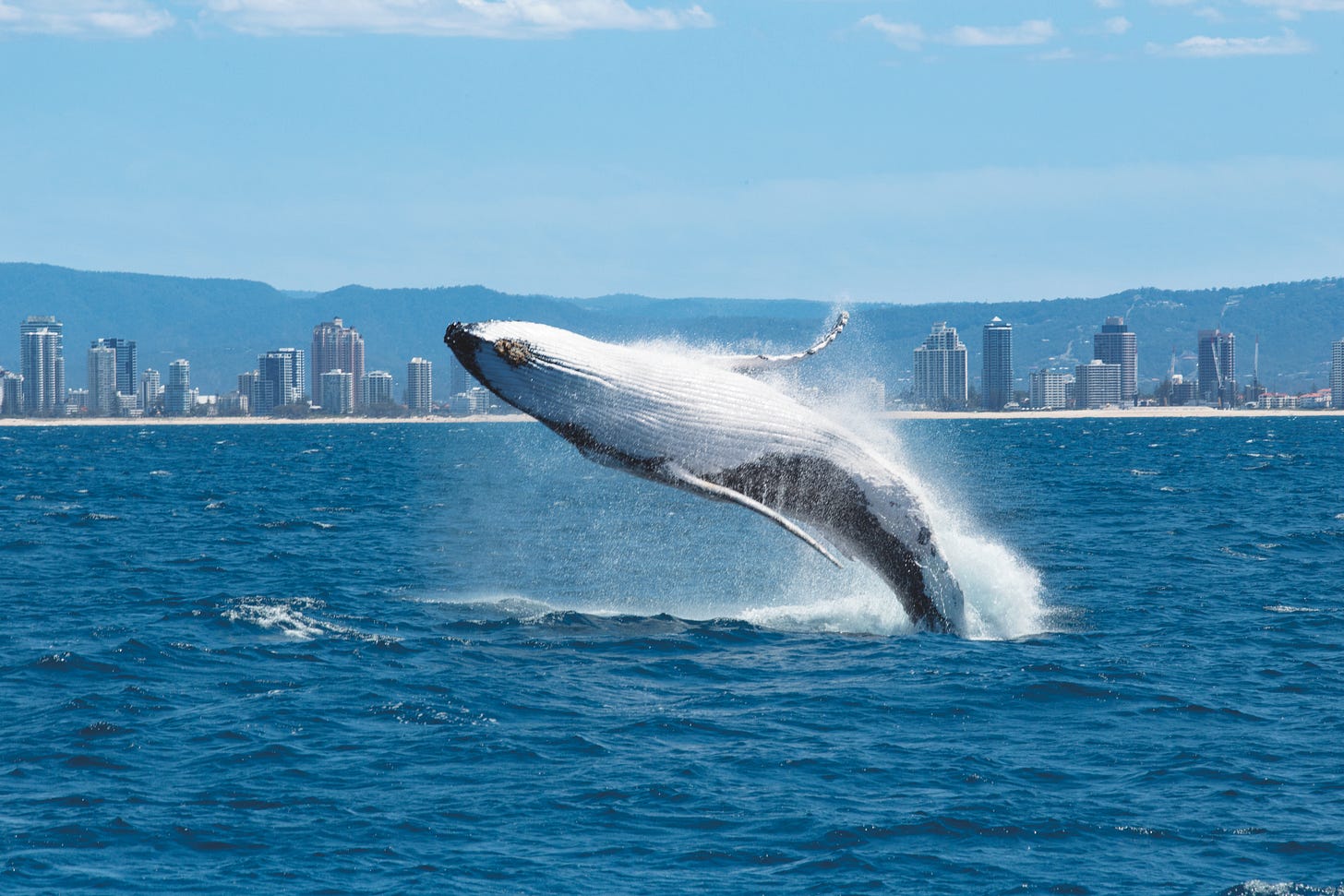
The Whaling Century
That faith was nearly broken.
Between 1904 and 1973, more than 200,000 humpbacks were killed in the Southern Hemisphere. Soviet fleets alone killed at least 48,000 illegally, disguising the numbers with falsified records. The brutality was industrial. Explosive-tipped harpoons. Factory ships processing whales into oil and meat within hours. Decks slick with blood.
On the east coast, humpbacks were intercepted on their migration north. At Byron Bay, residents complained of blood pouring into the sea from the station. At Tangalooma, the stench of boiling blubber hung in the air.
By 1963, the east coast population, known as Breeding Stock E1, had collapsed to about five percent of its original size. Some estimates put the survivors at 200 animals.
Elsewhere, cultural memory did not survive. Gray whales vanished from the North Atlantic. Humpbacks abandoned traditional breeding grounds in parts of the Pacific. Migration routes disappeared, carried to the grave by the whales who knew them.
Yet on the Great Barrier Reef, even when there were almost none left, the whales still arrived.
A huge thank you to paid subscribers and Founding Members, you make it possible for me to write these essays, record weekly podcasts and chase new stories. Paid readers get every piece two weeks early. If you’re on the free list, this is where your preview ends. Unlock the rest today with a 7-day free trial. Don’t wait two weeks.
The Science of Survival
Why did memory endure here when it was lost elsewhere?
The new study offers some answers.
Song. Male humpbacks sing long, complex calls that can travel hundreds of kilometres. In healthy populations, these are courtship displays. At low numbers, they likely became survival tools, ways of stitching a scattered population back together.
Competitive groups. Males gather around females and clash. In abundant populations, these are spectacles of aggression. At low density, they helped prevent whales from dispersing too far, keeping the population coherent.
Extended breeding seasons. Evidence suggests that during the bottleneck years, whales lingered longer in warm waters, giving themselves more time to find a mate.
Together, these behaviours helped them avoid the Allee Effect, the death spiral where animals become too rare to find each other, reproduction falters, and collapse accelerates.
Memory, reinforced by these strategies, carried them through. Those fragile adaptations were just enough to keep the population alive until whaling finally ended.
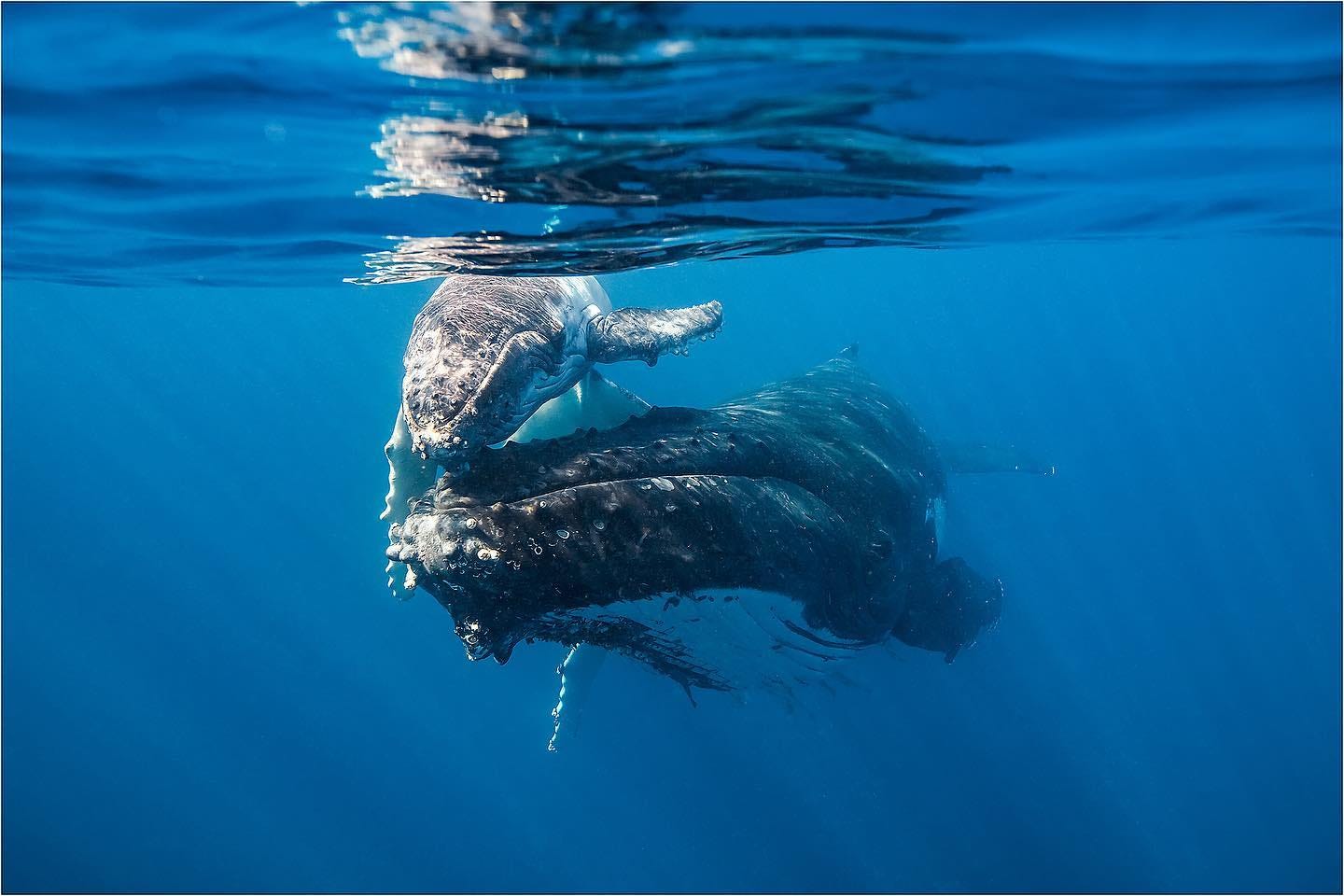
The Return
When commercial whaling ended in 1963, the survivors began to rebuild. By the late 1970s, scientists recorded steady growth. By the 2000s, the east Australian humpback population was increasing at nearly 11 percent a year, and it’s worth pausing on that number. Eleven percent is the biological ceiling for a mammal this size. Female humpbacks give birth to a single calf every two to three years, with pregnancies lasting 11 months and calves dependent for at least a year. With such slow reproductive cycles, sustaining 11 percent annual growth is as fast as recovery gets for the largest animals on Earth.
Today, more than 40,000 humpbacks migrate along the coast each winter. Aerial surveys show dense calving grounds in the Whitsundays. Satellite tags confirm the same resting areas described by explorers two centuries ago and by the Woppaburra for thousands of years.
On a calm August day, the horizon off Queensland erupts with breaches. Tail slaps echo like gunshots. Songs ripple through the water, reshaped each year, but recognisable, cultural heirlooms passed from whale to whale.
Stop the killing and whales return. The evidence is right there in front of us.
A Global Lens
The reef is not just a local story. It is a lesson for the world.
Gray whales in the eastern Pacific rebounded when hunting stopped. Southern right whales are slowly reclaiming nursery bays abandoned for generations. Even blue whales, the largest animals ever to live, are beginning to reappear in Antarctic waters.
The reverse is also true. In Iceland, whalers were granted a quota of 209 fin whales in 2025, despite mounting opposition from within the country itself. “Whaling has no future in Iceland,” the Minister of Food, Agriculture and Fisheries admitted last year, yet harpoons continue to fire from Kristján Loftsson’s fleet. In Japan, the government still defends the killing of minke and fin whales as cultural continuity, even as consumption of whale meat has collapsed to a fraction of what it once was. Norway, meanwhile, issued a quota of 1,406 minke whales for 2025, the largest in decades.
These are not the mass slaughters of the twentieth century, but they rob populations of the same chance humpbacks had in Australia. Every harpoon fired from boats sailing out of Reykjavík, Tokyo, or Oslo is one more memory erased before it can be passed on.
New Threats
Commercial whaling is no longer the main danger for most humpback populations, but it has not disappeared. Iceland still hunts fin whales. Japan continues to kill minkes and fins. Norway issues quotas in the thousands.
For humpbacks on Australia’s east coast, the threats now look different. Tens of thousands migrate through some of the busiest shipping lanes in the world. Collisions are rising. In 2022, a juvenile humpback washed up south of Brisbane with deep propeller cuts along its spine. Calves continue to be found entangled in shark nets along Queensland’s beaches.
Songs are being masked by the low thrum of global shipping and the thunder of seismic airguns. And the Antarctic feeding grounds, once rich with krill, are showing signs of decline as the Southern Ocean warms. A 2023 study found krill densities in some regions down by more than 50 percent compared to the 1970s.
For mothers with calves, already fasting and burning through fat reserves, these pressures can be fatal.
The whales remembered their way back from the brink. Whether they can survive us now depends on what choices we make.
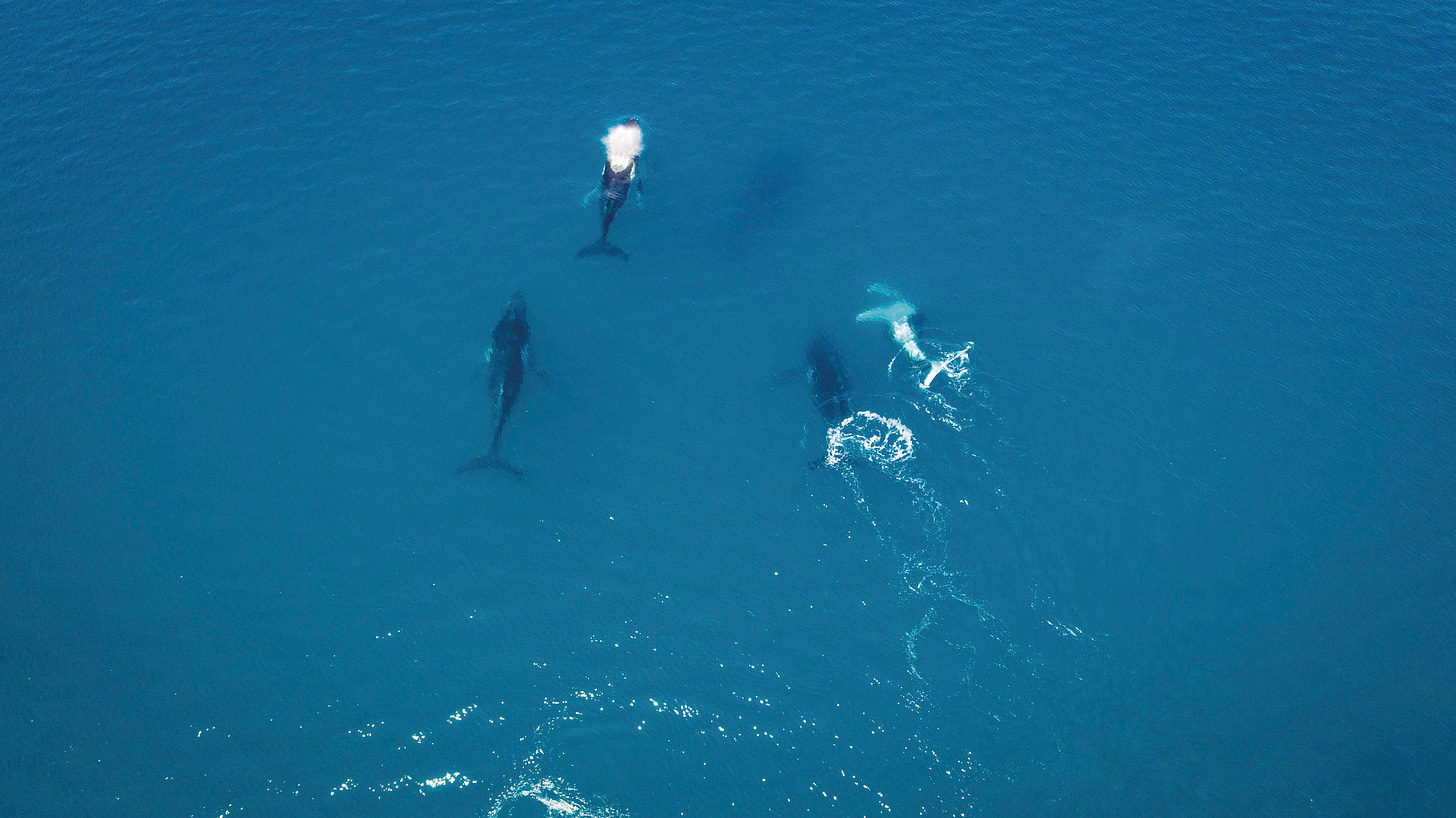
What the Whales Teach Us
The recovery of humpbacks in the Great Barrier Reef is not only biology. It is culture. The whales did not simply repopulate the reef. They remembered it.
Memory carried them through collapse. Memory allowed them to rebound. Memory now faces the next set of tests.
Whales, like us, are creatures of tradition. They teach their young. They gather in places their ancestors knew. They pass songs across oceans. Their survival is history as much as genetics.
For policymakers in Reykjavík or Tokyo, the lesson is simple: stop whaling and whales will recover. For scientists, the challenge is to treat culture as part of conservation, not a side note. For the rest of us, the task is to recognise kinship with another species that has carried memory through millennia.
The largest animals ever to live remembered their way across the abyss of near extinction. What they need from us now is simple, space to survive, and the freedom to remember.
This essay landed with paying subscribers two weeks before you saw it here. For less than what you’d spend on takeaway lunch without thinking twice, you can get these deep-dive essays the moment they’re published, along with weekly roundups, podcast episodes and breaking ocean stories.
Paid Subscriptions are more than support. They are a way of saying these stories matter. It helps me bring science to life, cut through the noise, and give you ways to act if you want to. This isn’t just storytelling. It’s a community.



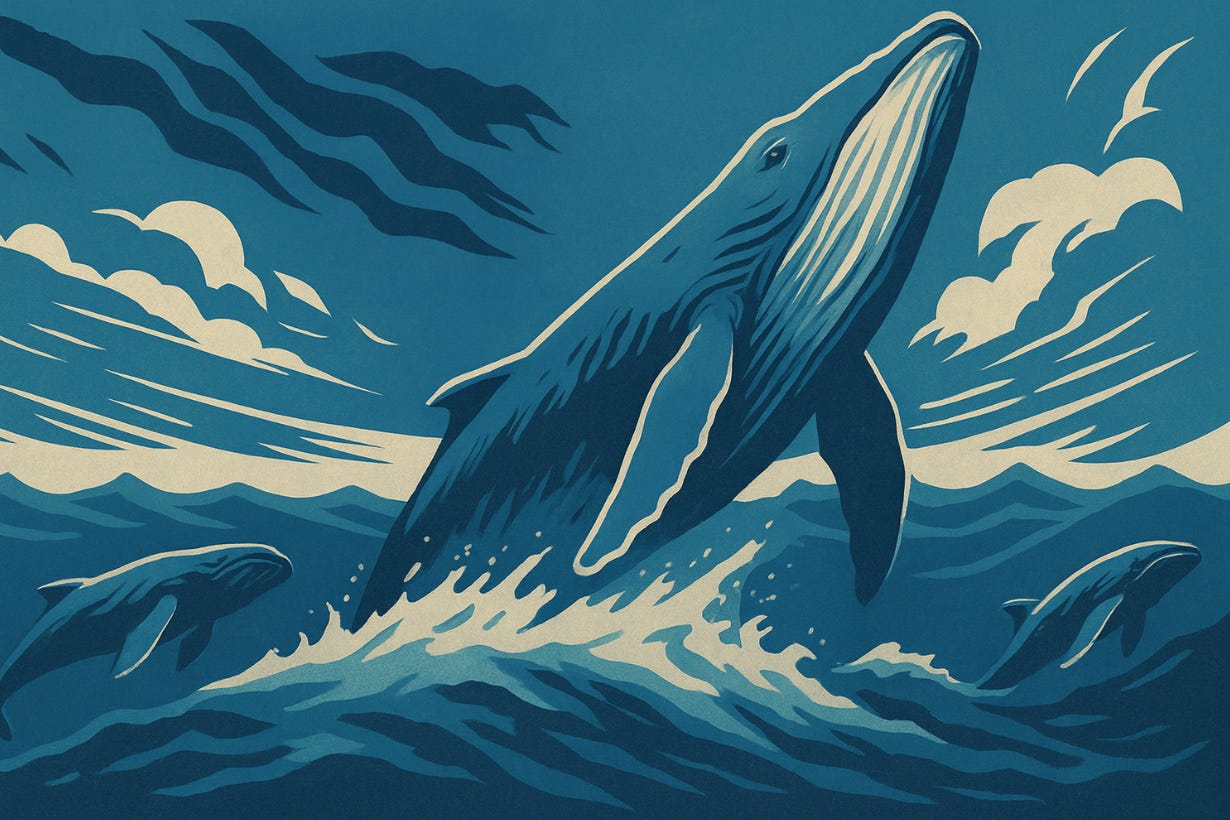
I have had the privilege of seeing these beautiful animals on both the east and west coast of Aus in 1999 and the thought of a world without them is so painful.